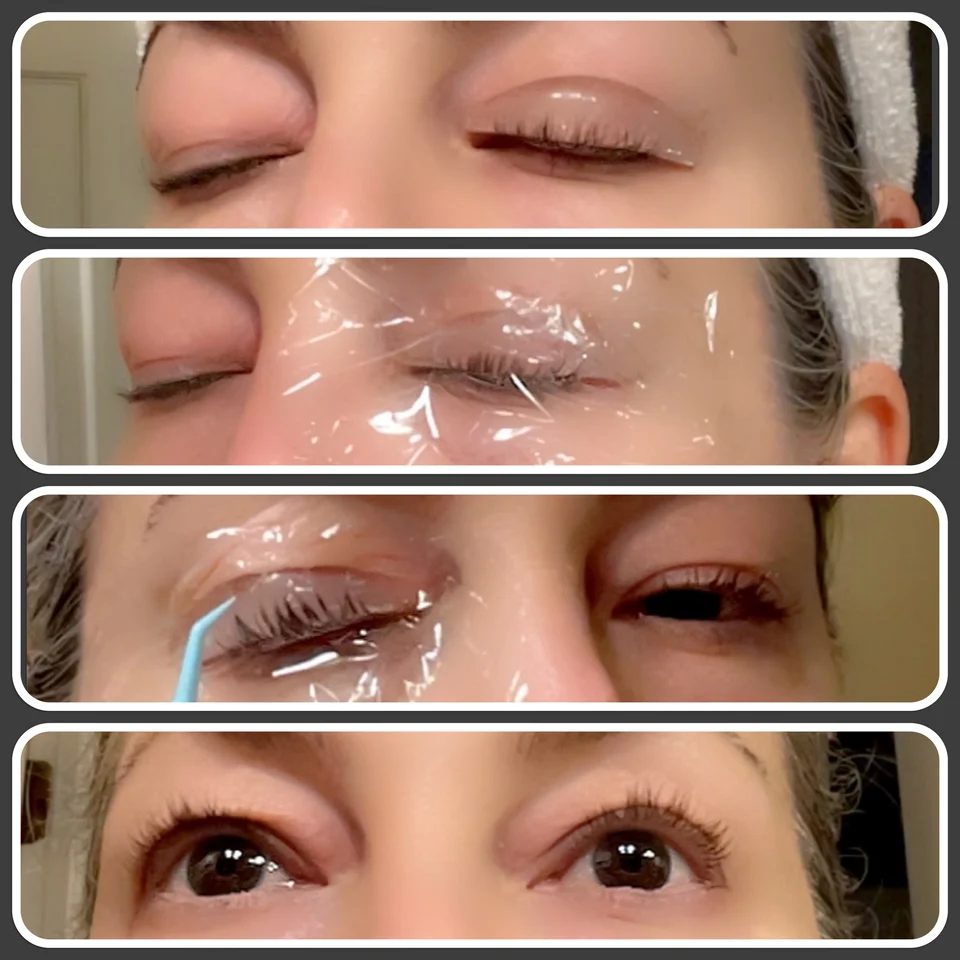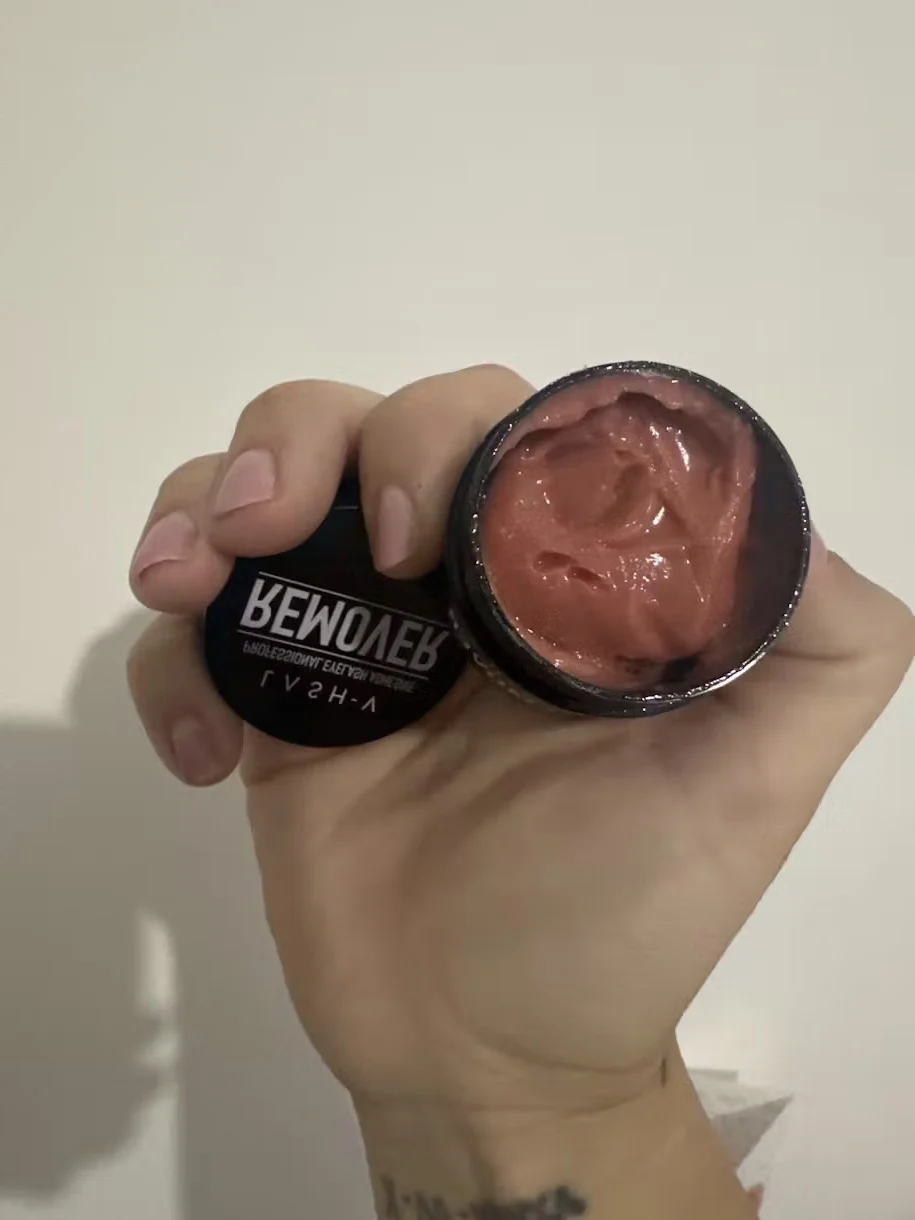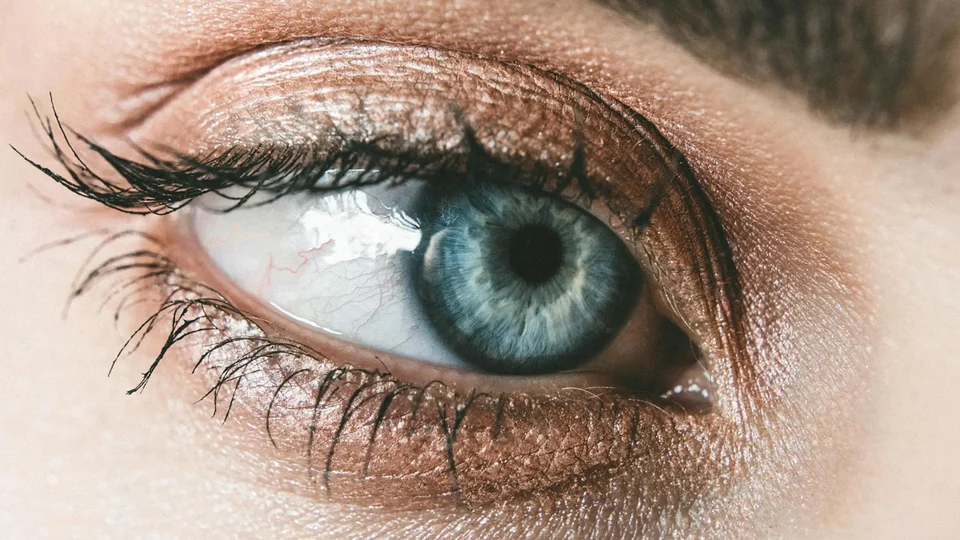How to Remove Lash Lift Adhesive?
Getting lash lift adhesive residue on your eyelids after a treatment can be concerning and uncomfortable. Unlike extension adhesives, lash lift glues are specifically formulated to be water-soluble and gentler for the delicate eye area.
This comprehensive guide covers safe, verified methods to remove lash lift adhesive while protecting your natural lashes and eye health.
⚠️ IMPORTANT MEDICAL DISCLAIMER: This information is for educational purposes only and should not replace professional medical advice. If you experience severe irritation, allergic reactions, or persistent adhesive that won't budge after gentle attempts, consult an eye care professional, dermatologist, or the technician who performed your lash lift immediately. Never attempt aggressive removal techniques that could damage your eyes or vision.
Understanding Lash Lift Adhesive Composition
Lash lift adhesive is fundamentally different from eyelash extension glue. Professional lash lift adhesives are primarily water-based formulations containing Polyvinyl Alcohol (PVA), glycerin, and purified water, making them specifically designed for easy removal.
These adhesives are water-soluble and "easily removed with water", which makes the removal process much gentler than dealing with cyanoacrylate-based extension glues. This composition is intentional - lash lift treatments are meant to be temporary and safe for regular reapplication.
Method 1: Warm Water Removal (Primary Method)
This is the safest and most effective method for water-soluble lash lift adhesives.

What You'll Need:
- Lukewarm distilled or filtered water
- Clean cotton pads or soft lint-free cloths
- Gentle, fragrance-free cleanser (optional)
- Clean towel
Step-by-Step Process:
- Wash your hands thoroughly and ensure good lighting in a clean bathroom
- Soak a cotton pad in lukewarm (not hot) water - temperature should be comfortable to touch
- Apply gentle pressure: Hold the damp cotton pad against the adhesive area for 30-60 seconds to allow water penetration
- Work systematically: Start from the outer corner of your eye, working inward to prevent debris from entering the eye
- Gentle wiping motion: Use soft, downward strokes to remove dissolved adhesive - never rub or scrub
- Repeat as needed: May require 3-4 cycles of soaking and gentle wiping
- Final cleanse: Rinse the entire eye area with lukewarm water to remove any residual adhesive
Why this works: Polyvinyl alcohol is "extremely soluble in water for reversibility", making water the most effective and safest removal agent.
Method 2: Steam Treatment for Stubborn Residue
For adhesive that has dried or set more firmly, gentle steam can help soften the water-soluble adhesive without harsh chemicals.
Process:
- Create gentle steam: Fill a clean bowl with hot (not boiling) water
- Safe distance: Hold your face 12-15 inches above the steam for 5-10 minutes
- Protect your eyes: Close your eyes during steaming to prevent irritation
- Follow with warm water: After steaming, immediately use Method 1 with warm water removal
- Gentle patting: Pat the area dry with a clean, soft towel
Safety note: Steam should be warm and comfortable, not hot enough to burn. If you feel any discomfort, increase your distance from the steam source.
Method 3: Professional Gentle Cleanser (When Needed)
If water alone isn't sufficient, a gentle approach with appropriate cleansers can help.
Recommended Products:
- Baby shampoo (tear-free formulation)
- Gentle micellar water (fragrance-free)
- Oil-free makeup remover specifically for sensitive eyes
Application:
- Dilute cleanser: Mix a small amount with lukewarm water (1:1 ratio for baby shampoo)
- Apply with cotton pad: Saturate a clean cotton pad with the diluted solution
- Gentle contact: Press gently against the adhesive for 30 seconds
- Soft wiping motion: Use gentle, downward strokes to remove softened adhesive
- Thorough rinse: Rinse extensively with lukewarm water to remove all cleanser residue
How to Get Lash Lift Glue Off: What Makes It Different

Understanding that lash lift adhesive is water-based is crucial for safe removal. Professional formulations like Elleebana's contain "Water (Purified Water), Polyvinyl Alcohol, Glycerin, PEG-60 Hydrogenated Castor Oil" and "dissolve quickly with water". This composition means you should never need harsh solvents, oils, or aggressive techniques that might be suggested for extension adhesive removal.
How to Remove Lash Lift Glue: What NOT to Do
❌ Dangerous Methods to Avoid:
- Never use acetone, nail polish remover, or alcohol-based products - these are unnecessary for water-soluble adhesives and can cause severe eye irritation
- Don't use oil-based removers - while not dangerous, they're unnecessarily harsh for PVA-based adhesives and may leave residue
- Avoid mechanical removal - never pick, scrape, or rub aggressively at adhesive residue
- Don't use hot water - lukewarm water is more comfortable and equally effective
- Never ignore professional advice - if your lash technician provided specific aftercare instructions, follow those first
Safety Red Flags Requiring Professional Attention:
- Redness or swelling persisting more than 24 hours after removal attempts
- Any changes in vision or eye pain
- Signs of infection (increased warmth, pus, severe swelling)
- Allergic reaction symptoms (widespread redness, itching beyond the treatment area)
- Adhesive that remains stuck after gentle water-based removal attempts
How to Get Rid of Lash Lift Glue: When to Seek Professional Help
Professional intervention is recommended when:
- Home removal attempts with water have failed after 2-3 gentle tries
- You have a history of eye sensitivity or allergies
- The adhesive covers a large area or affects multiple parts of your eyelid
- You experience any discomfort during removal attempts
- You're unsure about the type of adhesive used in your treatment
Lash lift results "can last for up to 6-8 weeks", and any adhesive residue should naturally diminish as your lashes shed through their normal growth cycle. Persistent adhesive may indicate the need for professional assessment.
Post-Removal Eye Care
After successfully removing lash lift adhesive, proper aftercare supports eye health and comfort:

Immediate Aftercare (First 24 Hours):
- Apply preservative-free artificial tears if eyes feel dry or irritated
- Use a gentle, fragrance-free eye cream if the eyelid skin feels tight
- Avoid eye makeup for 24 hours to let the area recover
- Monitor for any signs of ongoing irritation
Supporting Natural Lash Health:
- Maintain gentle daily cleansing with lukewarm water
- Consider using a lash conditioner to support natural lash strength
- Schedule professional lash lift maintenance as recommended (typically every 6-8 weeks)
- Keep the eye area well-moisturized with appropriate products
Prevention Tips for Future Treatments
Choosing Quality Services:
- Research technicians' credentials and read recent reviews
- Ask specifically about the adhesive brand and composition used
- Inquire about patch testing if you have sensitive skin
- Ensure the salon follows proper sanitation protocols
Communication with Your Technician:
- Inform them of any eye sensitivities or allergies
- Ask for demonstration of proper aftercare techniques
- Request contact information for post-treatment questions
- Understand what normal healing looks like vs. concerning symptoms
Frequently Asked Questions
How to remove glue residue after lash lift?
The most effective method leverages the water-soluble nature of lash lift adhesives. Soak a cotton pad in lukewarm water and hold it against the residue for 30-60 seconds, allowing the water to dissolve the Polyvinyl Alcohol-based adhesive. Follow with gentle downward wiping motions and thorough rinsing. This method works because "laminating glue is easily removed with water".
How do I get lash adhesive off my lashes?
For adhesive on the lashes themselves, use the same water-based approach but with extra gentleness. Apply lukewarm water with a clean cotton swab, working carefully along the lash line. The water-soluble adhesive will soften and can be gently wiped away. Never pull or tug at lashes, as this can cause damage or premature shedding.
How to remove lash lift solution?
Lash lift solutions (perming chemicals) are different from adhesives and require immediate attention if they contact skin outside the intended area. Rinse immediately with cool water for at least 15 minutes. For dried solution residue, use lukewarm water and gentle cleansing. Unlike adhesive removal, chemical solution contact may require professional evaluation.
What disintegrates eyelash glue?
For lash lift adhesive specifically, plain water is the most effective "disintegrant" because "Polyvinyl alcohol is extremely soluble in water". The PVA-based formulation dissolves readily without need for harsh chemicals. This is different from extension adhesives, which are cyanoacrylate-based and require different removal approaches.
Conclusion
Successfully removing lash lift adhesive is straightforward when you understand its water-soluble composition.
The gentle, water-based approach respects both the intentional design of these adhesives and the delicate nature of the eye area. Remember that lash lift adhesives are formulated to be temporary and removable - aggressive techniques are never necessary.
By following these evidence-based, gentle methods, you can safely address any adhesive residue while maintaining your eye health and natural lash integrity. When in doubt, the combination of lukewarm water, patience, and gentle technique will resolve most adhesive concerns safely.
Professional Sources Consulted:
- Elleebana Professional Lash Lift Products Documentation
- MAXYMOVA Professional Beauty Supply Technical Data
- LashX Professional Training Materials
- Polyvinyl Alcohol Technical Safety Data
Medical Safety Note: This information reflects current professional practices for cosmetic adhesive removal. Individual reactions may vary, and professional consultation is always recommended for persistent problems or concerning symptoms. Content verified and updated: 2025 - Information reflects current professional standards and product formulations.